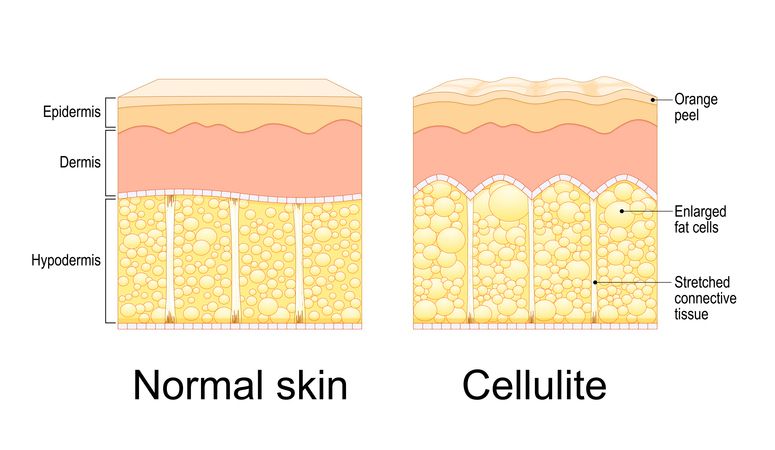Author: Natalie Ng|Updated: 8 May 2025
If your pimples won't go away, there’s usually more happening under the surface than you might think. Persistent breakouts can be linked to hidden hormonal imbalances, poor cleansing habits, or even overlooked diet triggers like high-glycemic foods and dairy. Sometimes, touching your face with your phone, dirty pillowcases, or constantly switching up your skincare products can make acne worse. Environmental factors like pollution can clog pores too. Using products that don't work well together, ignoring conditions like rosacea, or overloading your skin with harsh treatments can also cause stubborn acne. In some cases, cystic acne, ingrown hairs, and inflammatory acne can form deeper layers under the skin’s surface, making painful pimples stick around for weeks. Problems like polycystic ovary syndrome, excess oil from overactive sebaceous glands, or blocked hair follicles can all trigger breakouts that won’t go away easily. Getting to the root causes—whether it’s clogged pores, bacterial infections, or even other skin conditions like cold sores or acne-like eruptions—is the first step toward real results. Keep reading to find out why your acne might be hanging around, and what acne treatment options, from salicylic acid to laser therapy, can actually help you get rid of painful bumps and regain healthy skin.

Hidden Hormonal Imbalances

Hormones and Your Skin
Hormonal imbalances are a common reason why pimples won't go away. Hormones control oil production in your skin. When they shift, they can cause your sebaceous glands to release too much oil, leading to clogged pores and breakouts. This can make inflammatory acne, cystic acne, and painful pimples much harder to treat.
Androgens, a type of hormone, can overstimulate your oil glands. High levels often cause severe acne, especially around the jawline, chin, and lower cheeks. Changes in estrogen levels during periods, pregnancy, or menopause can also cause acne worse than usual.
Conditions That Affect Hormones
Health issues like polycystic ovary syndrome (PCOS) and thyroid problems can trigger stubborn acne. These conditions create long-term hormone shifts that not only worsen acne but can also lead to painful nodules and cysts deep in the skin’s surface.
If acne cysts, pus-filled bumps, or red bumps don’t go away after a few weeks, or if acne-like eruptions keep coming back, it may be a sign you need medical attention. A healthcare professional or dermatologist can run blood tests to check for hormonal imbalances and suggest the right acne treatment, such as prescription medications or treatments to help balance oil production.

Poor Cleansing Techniques
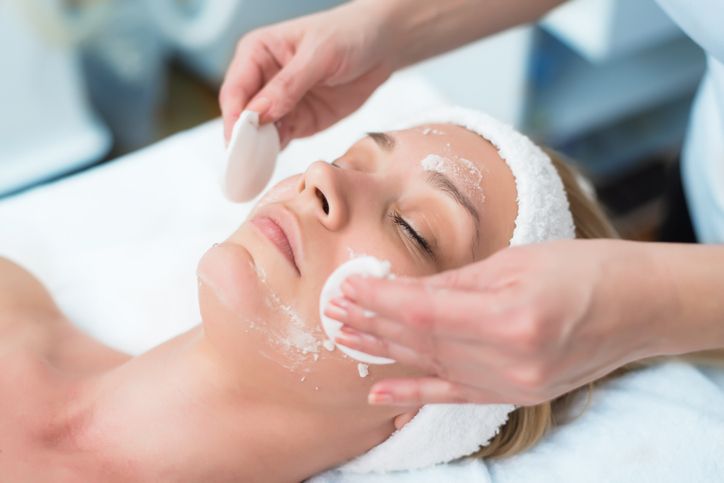
Harsh Scrubbing Damages the Skin
Scrubbing your face too hard does not help painful pimples or stubborn acne go away faster. In fact, it can make acne worse. Rough movements create tiny tears on the skin’s surface. These tears trigger inflammation and cause the oil glands to produce even more excess oil. This can block pores and cause more red bumps, pus-filled pimples, or even painful nodules to form.
Instead, use warm water and your fingertips to gently massage your cleanser in light, circular motions. Avoid using rough cloths or brushes that can irritate the skin. Pat your skin dry with a clean towel. This method helps protect the skin’s surface and prevents worsening acne without causing more blocked pores.
Skipping the Essential Double Cleanse
If you don’t double cleanse, you leave behind oil, sunscreen, and makeup that can clog pores. Dead skin cells, bacteria, and excess oil stay trapped inside hair follicles, causing new breakouts and making existing acne cysts harder to treat.
Double cleansing means first using an oil-based cleanser or micellar water to break down makeup and surface dirt. Then, you follow with a water-based cleanser to wash away anything left on the skin. Without this step, even strong acne treatment products like salicylic acid or benzoyl peroxide may not reach the deeper layers of your skin where bacteria and inflammation start.
Skipping a proper cleanse can lead to severe acne, inflammatory acne, and cystic acne that sticks around for weeks. A simple double cleanse can help unclog pores and support healthier skin with fewer painful bumps.
Read More
Book Now to Experience
Acne Treatment
1 Minute Self-Registration
Date should not be before minimal date

Overlooked Dietary Triggers
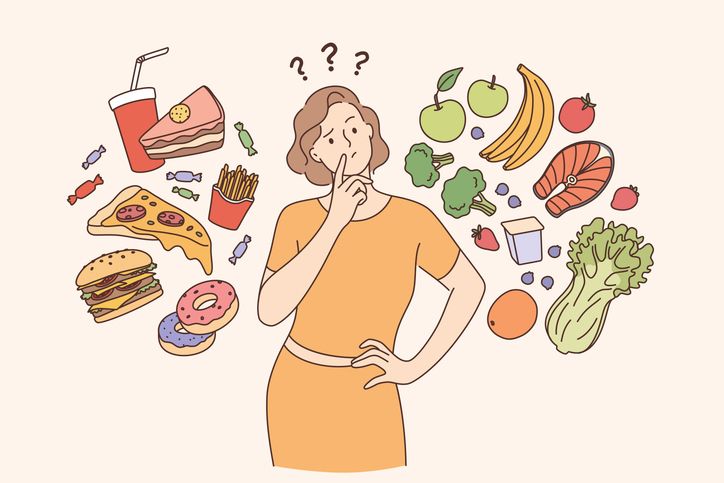
How Your Diet Affects Your Skin
Many people blame chocolate or greasy food for acne, but often the real problem lies with high-glycemic foods and certain dairy products. Eating white bread, sugary drinks, and processed snacks causes blood sugar spikes. These spikes trigger hormonal changes that stimulate your oil glands, increasing excess oil on the skin’s surface. This makes clogged pores and painful pimples more likely.
Dairy products, especially skim milk, can also disrupt your skin’s balance. Growth hormones and bioactive compounds found in milk may worsen acne by boosting oil production and inflammation. Some people also react to foods rich in iodine, like seaweed, shellfish, and iodized salt. For sensitive individuals, these foods can worsen acne symptoms and cause more red bumps and cystic acne.
Hidden Triggers in "Healthy" Foods
Even foods marketed as healthy, like smoothies or protein bars, can sneak in hidden sugars, whey protein, and additives that can aggravate acne. Whey protein, in particular, has been linked to acne flare-ups because it affects insulin and androgen levels. These changes can lead to more oil production and blocked pores, creating ideal conditions for cysts, whiteheads, and inflammatory acne.
If your pimples won't go away despite good skincare habits, looking closely at your diet might help. Choosing foods that don't spike your insulin or overload your oil glands can support clearer, healthier skin over time.

Cross-Contamination From Daily Objects
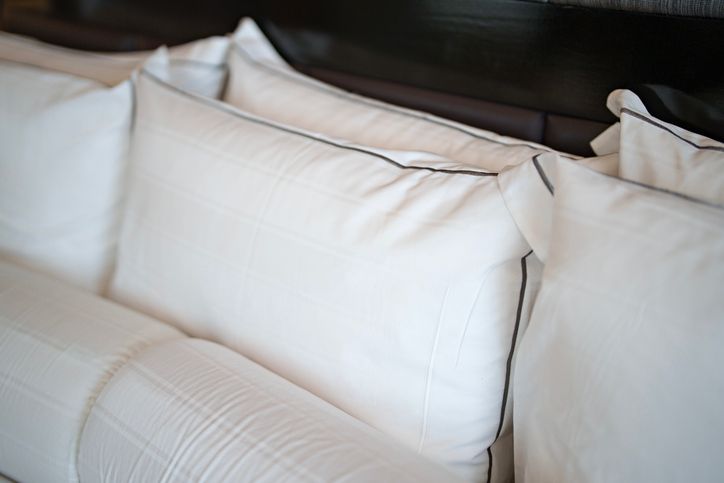
How Everyday Items Can Worsen Acne
Many people don't realize that objects they touch every day can make pimples worse. Your phone, pillowcase, and even dirty hands can all transfer bacteria, oils, and dead skin cells onto your skin’s surface. This can clog pores, worsen acne, and create painful pimples that are hard to treat with regular acne treatment methods.
When you press your phone against your face or sleep on an unwashed pillowcase, you expose your skin to bacteria and excess oil without realizing it. These hidden sources of contamination make stubborn acne stick around and can even lead to deeper problems like cystic acne and painful nodules.
Dirty Phone Screens and Breakouts
Phones collect bacteria, makeup residue, and oil from your hands and face all day. When you hold a dirty phone against your cheek, these substances transfer onto your skin and clog pores. This often causes inflammatory acne or acne-like eruptions along your jawline and cheeks.
To reduce bacteria transfer, clean your phone screen daily with electronic-safe wipes. Try using headphones or speakerphone to keep your device away from your skin. Clean hands before touching your phone and avoid placing your phone on dirty surfaces whenever possible.
Unwashed Pillowcases and Persistent Breakouts
Sleeping on a dirty pillowcase exposes your face to a buildup of hair products, sweat, oils, and environmental pollutants. This constant contact blocks pores and triggers painful pimples and acne cysts, especially along the sides of your face.
To avoid this, change your pillowcase every 2–3 days. If washing that often is hard, flip the pillow over or rotate between multiple clean pillowcases during the week. Keeping your sleeping surface clean helps stop bacteria from settling into your skin’s deeper layers.
Book Now to Experience
Acne Treatment
1 Minute Self-Registration
Date should not be before minimal date

Excessive Product Switching

Why Constantly Changing Products Hurts Your Skin
Switching between different acne treatments too quickly can stop your skin from healing properly. Many active ingredients, like benzoyl peroxide and salicylic acid, need time to work. It often takes at least a few weeks before you start to see real improvement. If you jump from one product to another too soon, you interrupt this process and make stubborn acne worse.
Each time you introduce a new product, your skin needs to adjust. Rapid changes can irritate the skin’s surface, increase inflammation, and trigger more painful pimples and red bumps. Frequent switching can also disrupt the balance of your oil glands, causing more excess oil, clogged pores, and even deeper cystic acne.
How to Build a Stable Routine
To treat persistent acne effectively, stick with one set of skincare products for at least 8 to 12 weeks. Introduce new treatments slowly, spacing them out by a few weeks to watch how your skin reacts. If you use both prescription medications and over-the-counter products, add them one at a time to avoid overwhelming your skin.
Patience is key to letting treatments work through the deeper layers of your skin where breakouts begin. A steady routine helps control bacteria, prevent blocked pores, and support the healing of inflammatory acne without causing new damage.

Stress and Sleep Deprivation
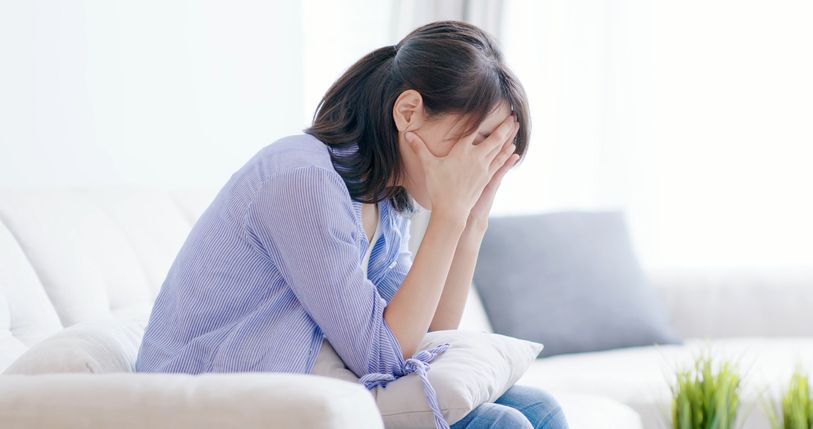
How Stress and Poor Sleep Trigger Acne
Stress and lack of sleep can make your skin worse even if you follow a good skincare routine. When you are stressed, your body releases more cortisol. This hormone signals your sebaceous glands to produce more oil. The extra oil clogs pores, causing painful pimples, acne cysts, and inflammatory acne that may not go away easily.
Poor sleep also disrupts your skin’s ability to repair itself. Most of your skin’s healing happens during deep sleep. If you don’t get enough rest, your body cannot fight bacteria, unclog pores, or reduce inflammation properly. This can lead to stubborn acne, more red bumps, and slower healing of existing breakouts.
Why Stress Management Matters for Healthy Skin
Chronic stress weakens your immune system, making it harder for your body to fight acne-causing bacteria. It can also increase inflammation, making acne worse and even triggering other skin conditions like acne-like eruptions.
To help your skin recover, focus on building better sleep habits and reducing daily stress. Managing these lifestyle factors supports your acne treatment, improves your skin’s surface, and helps keep painful pimples and cystic acne from getting worse.
Book Now to Experience
Acne Treatment
1 Minute Self-Registration
Date should not be before minimal date

Environmental Pollutants

How Pollution Affects Your Skin
Exposure to environmental pollutants can make it much harder for acne to heal. Dust, smoke, and airborne toxins settle on your skin’s surface throughout the day. These small particles mix with excess oil and dead skin cells, leading to clogged pores and more frequent breakouts.
Pollutants also create free radicals that damage your skin cells and weaken your skin’s natural barrier. When this barrier is compromised, bacteria can enter the deeper layers of your skin more easily. This can lead to inflammatory acne, painful pimples, and stubborn acne that won't go away even after a few weeks of regular treatment.
Protecting Your Skin From Pollution
If you live in a city or a polluted area, you need to be extra careful about cleansing. Washing your face with warm water and a gentle cleanser at the end of the day helps remove pollutants before they cause blocked pores or acne-like eruptions. Using skincare products that support your skin’s natural barrier can also help protect against irritation and reduce the risk of worsening acne.
Keeping pollutants off your skin gives your acne treatments, like salicylic acid or benzoyl peroxide, a better chance to work and helps promote clearer, healthier skin over time.

Wrong Skincare Ingredient Combinations
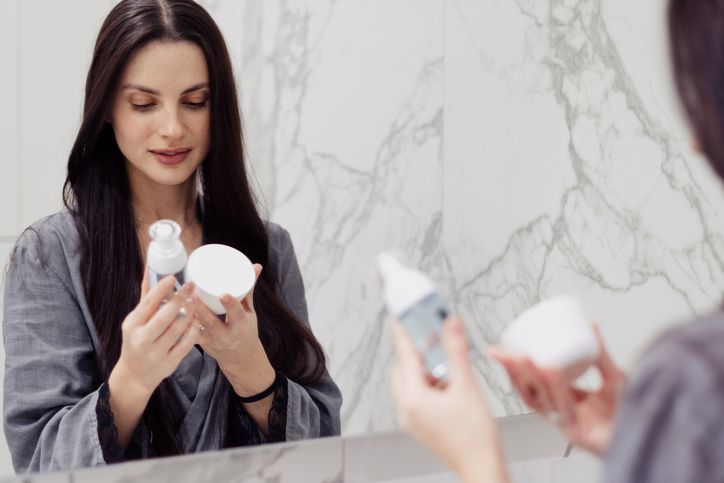
How Wrong Ingredient Combinations Damage Your Skin
Using skincare products with clashing ingredients can cause more harm than good. Some active ingredients cancel each other out or create irritation when mixed together. This can worsen acne, lead to blocked pores, and make painful pimples harder to treat.
For example, combining benzoyl peroxide with vitamin C can reduce the effectiveness of both ingredients. Mixing retinoids with alpha-hydroxy acids (AHAs) can cause extreme dryness and weaken your skin’s surface. Pairing salicylic acid with other strong exfoliators can strip the skin, causing inflammation and opening the door for bacteria to enter deeper layers, leading to more severe acne.
Smart Ingredient Pairing
To get the best results, apply certain ingredients at different times of the day. Use vitamin C in the morning and stronger treatments like retinoids at night. If you need both salicylic acid and benzoyl peroxide, start by using them on alternating days to avoid overwhelming your skin.
A consistent routine with the right ingredient combinations helps you manage excess oil, unclog pores, and clear inflammatory acne without causing unnecessary irritation or worsening acne symptoms.
Book Now to Experience
Acne Treatment
1 Minute Self-Registration
Date should not be before minimal date

Undiagnosed Skin Conditions
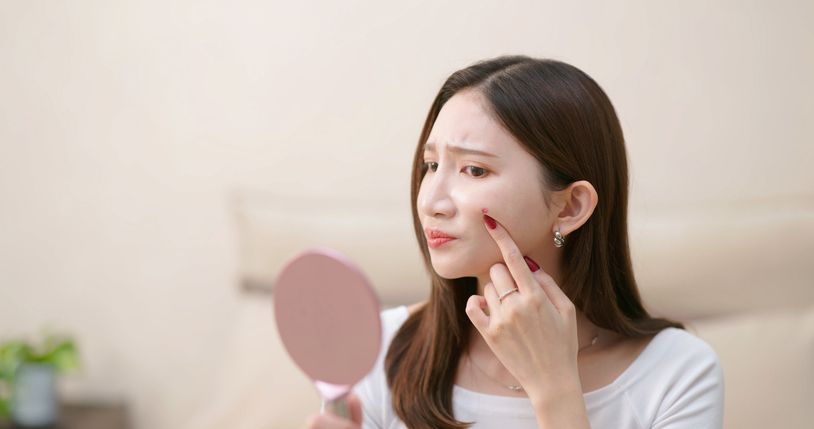
When It’s Not Really Acne
Sometimes, breakouts that seem like acne are actually signs of other skin conditions. Treating the wrong problem can make pimples worse and lead to more painful, stubborn acne that won't go away. Conditions like rosacea, fungal infections, and contact dermatitis can all cause acne-like eruptions that do not respond to normal acne treatments.
If your breakouts are not improving after using standard acne products like benzoyl peroxide or salicylic acid, you might be dealing with a different skin condition that needs a separate treatment plan.
Signs You Might Have a Different Skin Condition
• Rosacea often causes redness, small bumps, and visible blood vessels, mainly around the nose and cheeks. The skin may feel warm and irritated. These bumps are not regular pimples and need different treatments to avoid worsening acne-like symptoms.
• Contact Dermatitis appears after your skin touches an irritating substance. It usually causes redness, itching, and small bumps. Common triggers include fragrances, detergents, and certain skincare products. This reaction can block pores and create painful pimples or inflamed areas
• Fungal Acne is caused by an overgrowth of yeast in the hair follicles. It shows up as small, uniform bumps, mostly on the chest, back, and upper arms. Unlike regular acne, fungal acne does not respond to typical acne treatment and needs antifungal products.
If you notice your skin reacting in unusual ways or not improving with over-the-counter treatments, it’s best to see a dermatologist or healthcare provider. Proper diagnosis is key to choosing the right treatment and avoiding scars, cysts, and worsening symptoms.

Over-Treating Your Skin
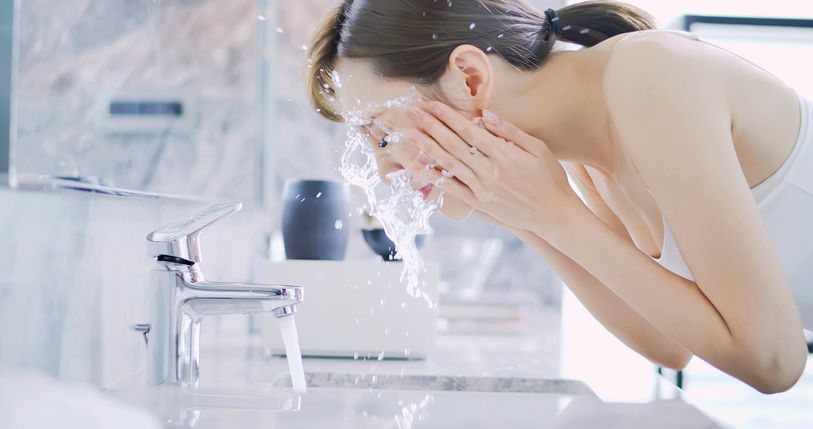
How Overdoing Treatments Can Make Acne Worse
Using too many acne treatments at once can backfire. Over-treating your skin with harsh cleansers, strong exfoliants, or multiple active ingredients can damage the skin’s surface. This weakens your skin’s natural barrier, causes inflammation, and increases excess oil production. As a result, painful pimples, clogged pores, and inflammatory acne become harder to get rid of.
Signs of over-treatment include a tight, burning sensation, excessive dryness, redness, and increased sensitivity. You might notice more frequent breakouts and even painful nodules or cystic acne if the skin’s protective layer gets compromised.
How to Fix Over-Treated Skin
If your skin feels irritated or acne seems to get worse after starting a new routine, it’s time to scale back. Use a gentle, non-comedogenic cleanser with warm water, and choose a barrier-repair moisturizer that contains ingredients like ceramides or niacinamide. Limit strong treatments like benzoyl peroxide or salicylic acid to once a day or a few times a week, depending on how your skin reacts.
Building a simple, steady routine gives your skin time to heal and helps clear up stubborn acne without causing new damage or worsening existing symptoms. If irritation continues, a healthcare provider or dermatologist can recommend prescription medications or other treatments like chemical peels or laser therapy to safely treat severe acne.

Clear Stubborn Acne with the Acne Treatment
If your pimples won't go away no matter how careful you are, you may need more than home remedies or over-the-counter products. When blocked pores, excess oil, and inflamed skin keep causing painful pimples, it’s time to consider a professional solution. The Acne Treatment offers a direct way to clear breakouts and support your skin’s healing from the deeper layers.
The Acne Treatment uses dual spiral suction with drainage technology to exfoliate dead skin cells, unclog pores, and calm inflamed hair follicles. This first step removes bacteria, excess oil, and dirt that worsen acne and trigger inflammatory acne and cystic acne. Once the skin’s surface is clean, a hydrating serum is infused to balance oil production and promote collagen growth, helping to reduce future acne outbreaks and support a healthy skin barrier.
How the Acne Treatment Works
• Deep-cleans pores with dual suction and drainage to remove dead skin cells, pus-filled debris, and excess oil.
• Infuses medical-grade hydrating serum into the skin to calm sebaceous glands and prevent overactive oil production.
• Helps soothe acne cysts, painful nodules, and acne-like eruptions by reducing inflammation under the skin’s surface.
• Supports faster healing of acne scars, red bumps, and uneven skin texture with improved hydration and collagen production.
Advantages of the Acne Treatment
• Non-invasive method: No needles, no surgery, no prescription medications required.
• Safe for severe acne-prone skin: Suitable for acne vulgaris, whiteheads, blackheads, and painful pimples.
• Short recovery time: No need for long downtime—resume daily life right after your session.
• Professional care: Treatments are carried out by trained beauticians who can adjust the approach based on your skin condition.
• Long-term results: By controlling oil production and unclogging pores deeply, the treatment reduces the chance of breakouts coming back.
If you're tired of stubborn acne that won't go away after a few weeks of home care, this professional acne treatment could be the next step toward clearer, healthier skin.
Experience clearer pores, calmer skin, and a smoother complexion with the Acne Treatment Free Trial. Book your experience today!
New Beauty's Acne TreatmentBook Now to Experience
Acne Treatment
1 Minute Self-Registration
Date should not be before minimal date
FAQ
1. Can weather changes cause my pimples to get worse?
Yes, shifts in humidity, heat, or cold weather can affect your skin’s oil production. Hot and humid conditions can cause more excess oil, blocked pores, and worsen acne. Dry and cold air can irritate the skin’s surface, leading to inflammation and painful pimples.
2. Do ingrown hairs cause pimples that won't go away?
Ingrown hairs can mimic acne by creating red bumps and pus-filled spots. When hair grows back into the skin, it clogs the hair follicles and triggers inflammation, sometimes leading to stubborn acne-like eruptions that need different treatments to clear.
3. Could using the wrong sunscreen worsen my acne?
Yes, heavy or greasy sunscreens can clog pores and increase breakouts, especially if they aren't labeled non-comedogenic. Choosing the wrong product can trap bacteria and oil on the skin’s surface, making pimples worse over time.
4. Is popping pimples the reason they don't heal properly?
Popping pimples can push bacteria deeper into the skin, damage the deeper layers, and create more inflammation. This habit often causes more severe acne, painful nodules, or even permanent scars that are harder to treat later.
5. Are painful pimples ever linked to serious health issues?
In rare cases, persistent painful pimples and acne cysts could be signs of underlying issues like hormonal disorders or even early symptoms of other skin conditions. If breakouts come with other symptoms like rapid hair growth, irregular periods, or extreme inflammation, it’s important to see a dermatologist or healthcare provider.
Recommended Articles
COPYRIGHT© NEW BEAUTY MANAGEMENT LIMITED 2025. ALL RIGHT RESERVED.

